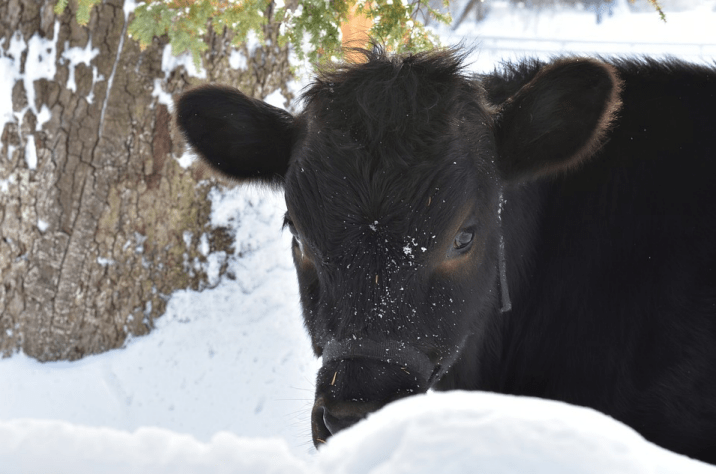Cattle futures extended a surge to a record and wholesale beef jumped to a 13-month high after a weekend blizzard hammered the Midwest, and a Kansas livestock group estimated the snowstorm may have killed thousands of animals, signaling tightening meat supplies.
More than half of U.S. feedlots are located in the region hit by the massive storm that dumped more than 12 inches (30 centimeters) of snow, blanketing an area from the Texas Panhandle to Nebraska, said Lee Reeve, principal at Reeve Cattle Co. in Garden City, Kansas, and president-elect of the Kansas Livestock Association. Losses were the highest among younger animals and a feedlot with 80,000 head of cattle north of Garden City lost more than 1,000 animals, he said in a telephone interview.
Northern Ag Network spoke with a cattle feeder from Nebraska on the current market and weather situation. The source confirmed that they were not impacted by the weather in the southeastern part of the state.
On the market end of things, feeders and analysts want cow-calf producers and those that are hedgers to stay calm. The market is higher there is no arguing that. Feeders are so current right now they are pulling June cattle at this point. 1300 pound steers are being sent out three weeks early. As of now, feed lots in certain parts of Nebraska are profiting $100 to $200 a head.
Does this uptick in the market mean that calf prices will be high this year? It's too early to say. Feedlot operators are not buying calves unless they are
As for those hedgers, they can make money if they can afford to play. It could be as easy as continuing to watch the markets and play the game. Hedge and lift. Hedge and lit. But, at the end of the day producers need to stay calm and not over react. The market could easily correct itself as the season outlook is predicting come summer time.
“The storm came on so fast, and it was the heaviest snow I’ve ever seen,” said Reeve, who lost about 40 animals from his 43,000-head operation.
Cash cattle prices had seen big gains even before the storm, surging 40 percent since the middle of October as domestic and global beef demand rose. President Donald Trump declared success last month in gaining greater access to China for U.S. beefs suppliers following meetings with President Xi Jinping, and Brazil’s beef exports may trail previous expectations after a probe into tainted meat last month led to temporary import bans by several countries.
On the Chicago Mercantile Exchange, cattle futures for June delivery rose 2.4 percent to close at $1.2705 a pound after climbing by the limit of 3 cents, the highest ever for the contract that debuted in February 2016. Aggregate trading more than doubled compared with the 100-day average for this time, according to data compiled by Bloomberg. The price jumped 12 percent in April.
Feeder-cattle futures for August settlement rose 1.2 percent to close at $1.556 a pound after jumping by the limit of 4.5 cents to a contract record of $1.5825.
At midday, wholesale beef rose 1.1 percent to $2.2877 a pound, the highest since March 21, 2016, U.S. Department of Agriculture data showed. The price has climbed 25 percent since mid-October.




